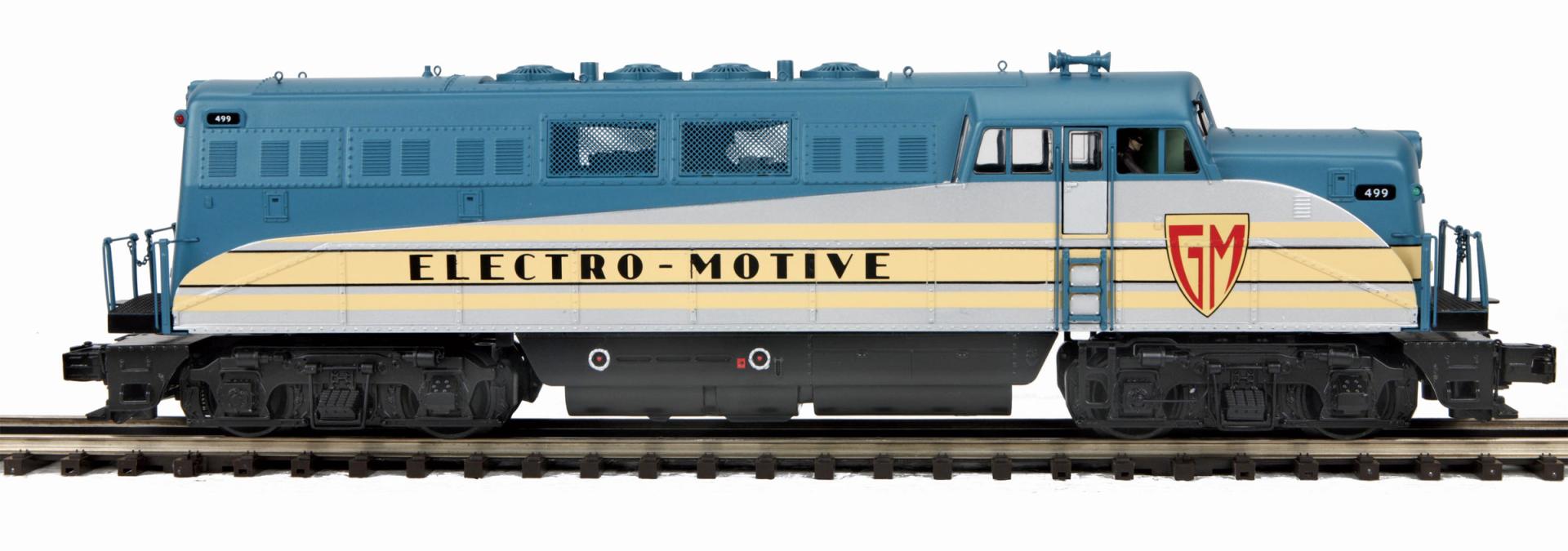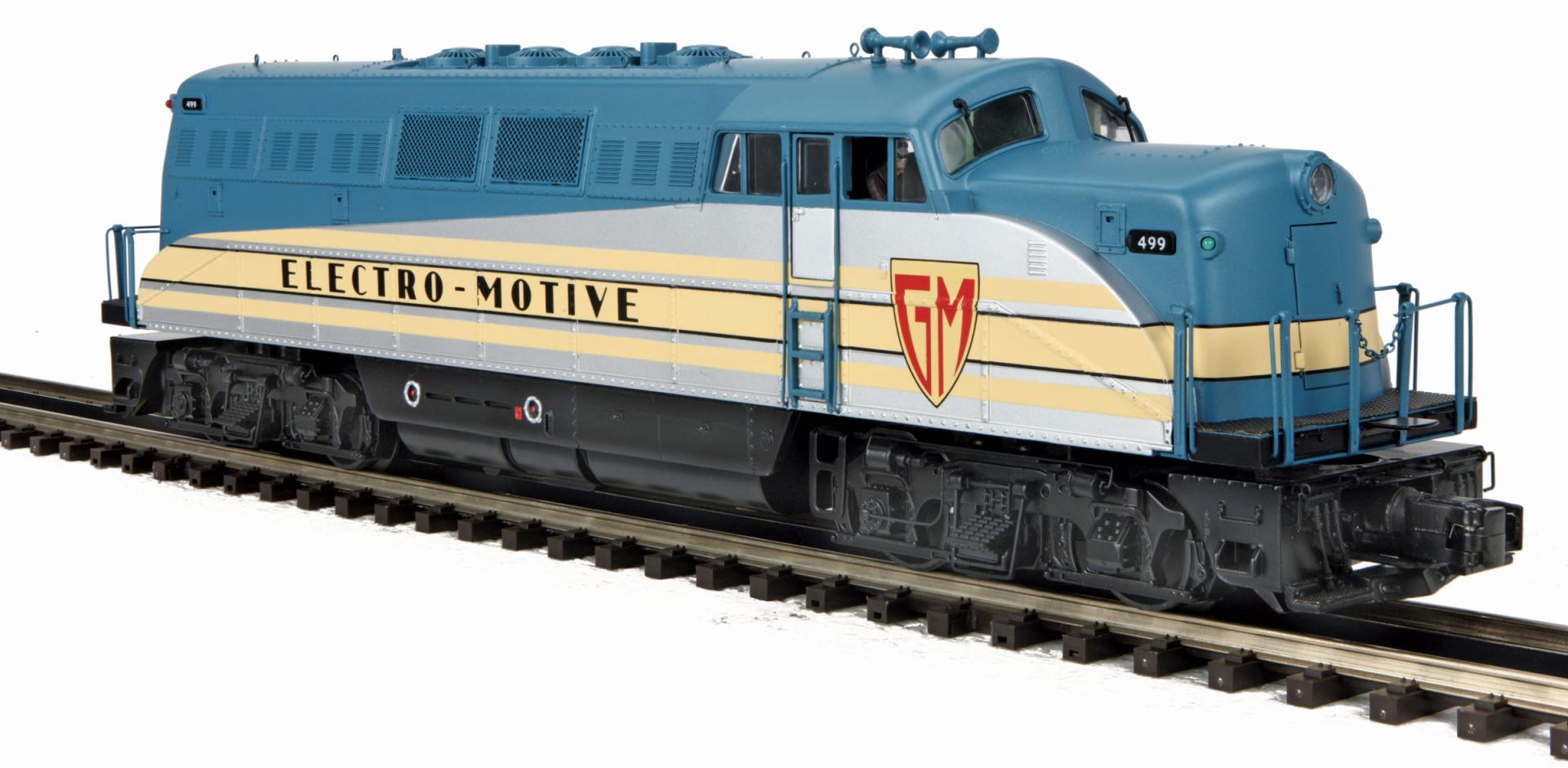

EMD O Gauge Premier BL-2 Diesel Engine w/Proto-Sound 3.0
Overview
Seeing Alco sales coming up fast in the rear-view mirror, EMD countered with the BL2 (“BL” for “branch line) in 1948. The new design was basically a 1500 hp F3 with end platforms for switching crews and side cutouts for better rear visibility. The BL2, however, proved a halfway solution, and sales were disappointing. Only 59 BL2s were sold to nine railroads; notable non-buyers included major EMD customers like the Pennsy, New York Central, Santa Fe and Union Pacific.
But EMD learned quickly. Less than two years after the BL2, it introduced the GP-series road switchers that would become runaway best sellers. In retrospect, the BL2 seemed to personify one of EMD project engineer Dick Dilworth’s goals for the GP7: “to make a locomotive so ugly in appearance that no railroad would want it on the main line or anywhere near headquarters, but would keep it out as far as possible in the back country, where it could do really useful work.” Beloved by railfans, however, the BL2 had the last laugh. Of the 59 original units, seven survive today in preservation — a higher survival rate than virtually any other first-generation diesel.
After a 10-year absence, the BL2 returns to the Premier lineup for 2017, complete with diesel exhaust smoke, LED-illuminated class and marker lights, see-though side grilles, and super-detailed Blomberg trucks that can be configured for 3-rail or 2-rail operation.
